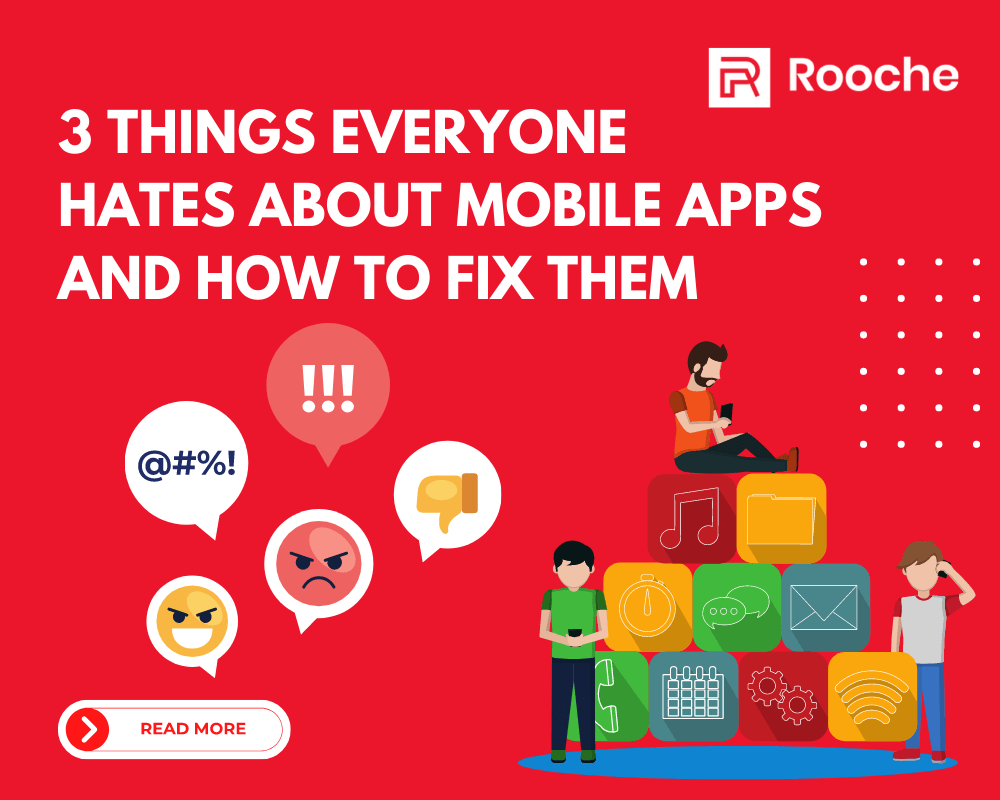3 Things Everyone Hates About Mobile Apps and How to Fix Them
Everyone has their favorite mobile app. However, no matter how great it is, there’s always something that bugs you about […]
Dec 8, 2022
Aug 11, 2023

Nowadays, where attention spans are fleeting, creating a website that merely showcases information is no longer sufficient. To stand out in a crowded online landscape, websites need to be interactive, offering engaging experiences that capture users’ attention and keep them coming back for more. This article delves into the strategies and techniques that illustrate how interactive websites effectively engage and retain users, transforming casual visitors into loyal brand advocates.
Interactive websites revolutionize user experiences by providing immersive, dynamic, and personalized content. This engagement not only captivates users but also fosters a sense of connection and loyalty. Let’s explore the various ways interactive websites accomplish this:
Interactive websites leverage user data to deliver tailored experiences. Through features like personalized recommendations, customized user interfaces, and dynamic content, websites can resonate with individual preferences, making users feel valued and understood.
Interactive elements such as polls, surveys, quizzes, and interactive infographics encourage users to actively engage with the content. This active participation creates a sense of involvement, keeping users invested in the website’s offerings.
Chatbots, comment sections, and user forums enable direct interaction between users and the website. This two-way communication fosters a community atmosphere, where users can voice their opinions, ask questions, and share insights.
Gamification techniques, such as rewards, badges, and leaderboards, introduce an element of competition and achievement. Users are motivated to explore the website further to unlock rewards, enhancing their engagement.
Interactive websites provide immediate feedback, responding to user actions in real time. This responsiveness enhances the user experience, making users feel heard and acknowledged.
Engaging visual content, such as interactive maps, 3D models, and virtual tours, immerses users in a sensory experience. These elements stimulate curiosity and exploration, driving prolonged user engagement.
Educational websites can employ interactive tutorials, simulations, and interactive courses. These tools facilitate active learning, making the educational journey more enjoyable and effective.
Integrating social media feeds, sharing buttons, and user-generated content seamlessly merges the website experience with users’ social lives. This integration increases the website’s reach and user engagement.
Interactive storytelling techniques, such as parallax scrolling and interactive narratives, draw users into a captivating storyline. This emotional connection keeps users invested in exploring the narrative.
For more immersive engagement, websites can incorporate VR experiences, allowing users to explore virtual worlds and scenarios. VR brings a sense of novelty that can significantly enhance user retention.
The integration of interactive elements into websites provides a multitude of benefits that go beyond mere engagement. Here’s a look at some key advantages:
Interactive websites engage users through personalized experiences, active participation, two-way communication, gamification, real-time feedback, and immersive visual content.
Businesses across various industries, including e-commerce, education, entertainment, and technology, can benefit from interactive websites to engage users and drive conversions.
Yes, interactive websites can be tailored to suit different target audiences. Customization based on user preferences ensures effective engagement across diverse demographics.
Small businesses can start by incorporating simple interactive features like polls, quizzes, and live chats. As they grow, they can explore more advanced options like VR experiences and personalized recommendations.
To ensure user privacy, interactive websites should clearly communicate data collection practices, provide opt-in choices, and adhere to relevant data protection regulations, such as GDPR.
Absolutely. Interactive websites create memorable and engaging experiences that foster user loyalty by making users feel valued and connected to the brand.
In the era of digital competition, the power of interactive websites to engage and retain users cannot be understated. By offering personalized experiences, encouraging active participation, and integrating various interactive elements, websites can forge stronger connections with users.
The benefits extend beyond engagement, impacting brand perception, conversion rates, and SEO rankings. As technology continues to evolve, embracing interactive web design is a strategic move that ensures lasting success in the online realm.

Everyone has their favorite mobile app. However, no matter how great it is, there’s always something that bugs you about […]
Dec 8, 2022

What is inclusive web design? Inclusive web design is the practice of building a website that is accessible to all […]
Dec 8, 2022

Your website serves as the digital storefront, welcoming visitors from all corners of the globe. But what if your website […]
Sep 13, 2023
Join our newsletter and be the first to receive future promo and sale updates from Rooche!